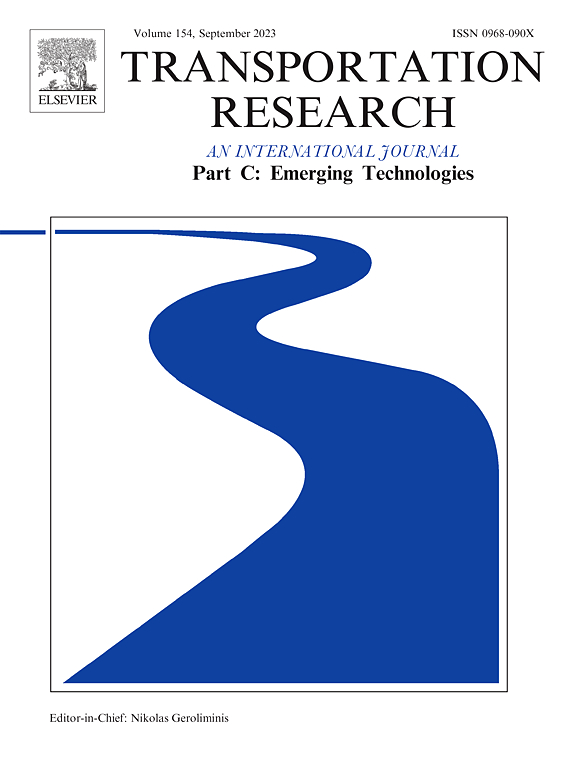Multi-node joint optimization for fine-grained vehicle trajectory reconstruction using vehicle appearance and identity data
IF 7.6
1区 工程技术
Q1 TRANSPORTATION SCIENCE & TECHNOLOGY
Transportation Research Part C-Emerging Technologies
Pub Date : 2025-02-01
DOI:10.1016/j.trc.2024.104995
引用次数: 0
Abstract
Automatic vehicle identification (AVI) data provides information about vehicles’ identity and location, which enables accurate vehicle trajectory extraction. However, collecting complete and continuous long-term trajectory data is challenging due to limitations in coverage rate and identification accuracy. To recover the incomplete trajectory, current research mainly focuses on coarse-grained trajectory reconstruction. While these methods are adept at reconstructing the road segments traversed by vehicles, they cannot restore the spatial–temporal details of vehicle journeys and capture individual variability. To address these limitations, we propose a Multi-node Joint Optimization (MNJO) model, which utilizes AVI data and individual appearance features to achieve fine-grained vehicle trajectory reconstruction. The MNJO comprises two stages: local instance association and global trajectory reconstruction. In the local instance association stage, we design an inter-vehicle bidirectional optimization mechanism, which integrates the competitive and associative interactions among vehicles to improve their association across different nodes. In the global trajectory reconstruction stage, we propose a trajectory optimization network for trajectory scoring based on the spatial–temporal characteristics and the local association results of all nodes along the trajectory. Due to the lack of related datasets, we construct the Regional Vehicle Information (RVI) dataset, the first for fine-grained trajectory reconstruction, collected from real-world AVI systems. Extensive experiments on the RVI show that the MNJO can achieve significant enhancement in reconstruction accuracy compared to other methods, demonstrating the effectiveness and superiority of the proposed method. To the best of our knowledge, this is the first study on fine-grained vehicle trajectory reconstruction.
求助全文
约1分钟内获得全文
求助全文
来源期刊
CiteScore
15.80
自引率
12.00%
发文量
332
审稿时长
64 days
期刊介绍:
Transportation Research: Part C (TR_C) is dedicated to showcasing high-quality, scholarly research that delves into the development, applications, and implications of transportation systems and emerging technologies. Our focus lies not solely on individual technologies, but rather on their broader implications for the planning, design, operation, control, maintenance, and rehabilitation of transportation systems, services, and components. In essence, the intellectual core of the journal revolves around the transportation aspect rather than the technology itself. We actively encourage the integration of quantitative methods from diverse fields such as operations research, control systems, complex networks, computer science, and artificial intelligence. Join us in exploring the intersection of transportation systems and emerging technologies to drive innovation and progress in the field.

 求助内容:
求助内容: 应助结果提醒方式:
应助结果提醒方式:


